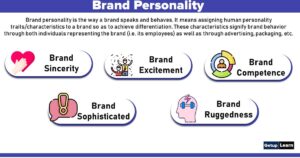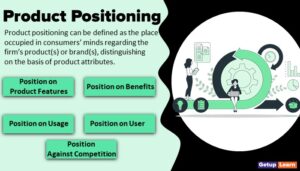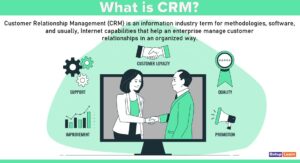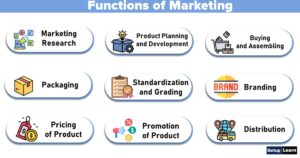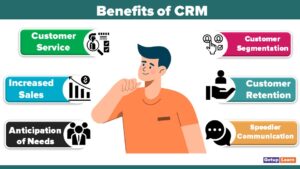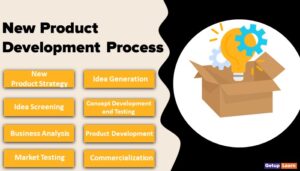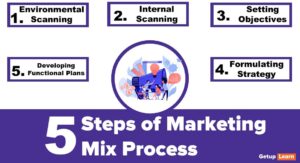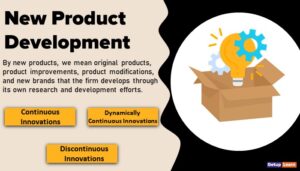Table of Contents
Stages of Product Life Cycle
The Product Life Cycle describes the stages a product idea goes through from beginning to end. Following are the stages of product life cycle:
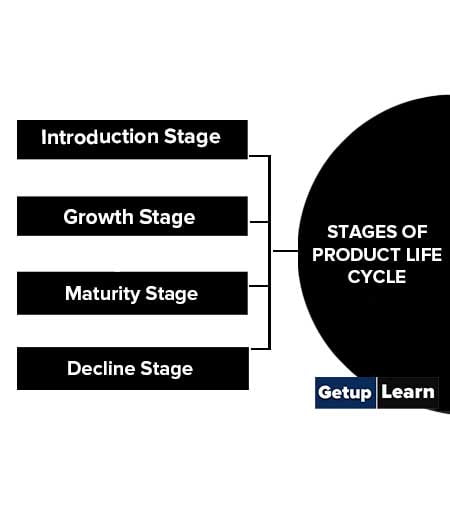
Introduction Stage
In the market introduction stage, sales are low, as a new idea is first introduced to a market. Customers aren’t looking for the product. They don’t even know about it. Informative promotion is needed to tell potential customers about the advantages and uses of the new product.
A high product failure rate, little competition, frequent product modification and limited distribution characterize the introduction stage. Both the production and marketing costs are high because of the lack of mass production economies.
At this stage, profits are negative because of low sales and heavy distribution and promotion expenses. Even though a firm promotes its new product, it takes time for customers to learn about it. During this stage technical defects often appear in the product due to insufficient prior testing.
These defects may be detected and eliminated. The pioneering stage is the riskiest and most expensive as there is a high percentage of product failures during this period. The type of the product rather than the seller’s brand is emphasized in this stage.
Growth Stage
If the product gains consumer acceptance at the introduction stage, it will enter the growth stage. This stage is characterized by an increase in the number of buyers who wish to buy the product in addition to those who accepted the product at the introductory stage.
In the growth or market-acceptance stage, both the sales and the profit curves rise, often at a rapid rate. Competitors enter the market, and in large numbers if the profit outlook is particularly attractive. Sellers shift to a “buy-my-brand” rather than a “try-my-product” promotional strategy.
In this stage, a new product gains wider consumer acceptance, and the marketing goal is to expand distribution and the range of available product alternatives. Total and unit profits are high because the mass market buys distinctive products from a limited group of firms and is willing to pay for them.
To accommodate the growing market, modified versions of basic models are offered, distribution is expanded, persuasive mass advertising is utilized, and a range of prices is available.
Maturity Phase
Most products that survive the heat of competition and gain customer’s approval enter the maturity phase. This phase is characterized by slowing growth rates of sales and profits. In fact, a decline in profits seems to appear now.
This phase is also marked by cutthroat competition which often tends to narrow down to a price and promotion war. It is an irony that when the firm has established its product and generated customer preferences for its brand, competition intensives and the firm has no other alternative but to invest resources in service augmentation and also simultaneously undertake the task of cost reduction and, hence, price reduction.
Most of the products in the maturity stage of their life cycle remain therefore a considerably long period of time. Marketing managers, therefore, have to make efforts to retain the products in this stage as it is followed by the decline stage.
Market growth rate ceases and firms make efforts to increase their own share by competing with their competitors. As prices and profits continue to fall, marginal competitors begin dropping out of the market. Dealer’s margins also shrink, resulting in less shelf space for mature products and a general reluctance to push the product.
Decline Phase
This is the phase when sales decline because customer preferences have changed in favor of more efficient and better products. Customers’ value perception of the product also undergoes a change. For most products, a decline stage, as gauged by sales volume for the total category, is inevitable for one of the following reasons:
- A better or less expensive product is developed to fill the same need.
- People simply grow tired of a product (a clothing style, for instance), so it disappears from the market.
- The need for the product disappears, often because of another product development.
With technological advances, the entry of new firms with better products, changes in consumers’ tastes, etc. the firm’s product faces intense competition in the market. Further promotional efforts do not bring out desired results.
A further decline in price also does not result in an increase in sales. Continuous fall in the product’s sales represents its declining stage. To continue with such products would mean using a firm’s scarce resources at the cost of searching for replacements, an unbalanced product mix, reduced profits, and declining goodwill of the firms.
Strategies of Product Life Cycle
These are the following strategies of product life cycle at different stages of product life cycle:
- Strategies of Introduction Stage
- Strategies of Growth Stage
- Strategies of Maturity Phase
- Strategies of Decline Phase
- Dropping Products
Strategies of Introduction Stage
The strategy of entering during the introductory stage is based on the idea of building a dominant market position and thus lessening the effectiveness of competition. According to P. Kotler management can pursue one of the four strategies on the basis of high low price and promotion:
Rapid Skimming Strategy
It consists of launching the new product at a high price and with a high promotion level. The firm charges a high price in order to recover as much gross profit as possible. It spends heavily on promotion to convince the market.
This strategy is adopted when the customers are unaware of the product and can pay the asking price and the firm faces potential competition and wants to build up brand preference.
Slow Skimming
This strategy is based on the assumption that a firm has sufficient time to recover its pre-launch expenses. This happens when the technology being used by the firm is highly sophisticated and competition will have to invest substantial resources to acquire this technology.
Further, since most competitors may not have the required resources, competition may be limited to just one or two large companies. Another environmental characteristic supporting this strategy is that the market size for the product is limited and those who are aware are willing to pay any price to acquire it.
Prices are kept on the higher side to earn as much as gross profit and promotion expenses are low because the market is limited and most of the customers are aware of the product and the potential competition is not imminent.
A Rapid Penetration Strategy
It means launching the product at a low price and high promotion. The prices are kept on the lower side because most buyers are price sensitive. The promotion expenses are high because the market is large, the market is unaware of the product and there is strong potential competition.
The only difference between rapid skimming and penetration is the firm’s long-term objectives. If the objective is market share and profit maximization in the long run and the market is characterized by intensive competition or other entry barriers, a firm may choose to enter the market with this strategy.
Slow Penetration Strategy
It means introducing the product with low promotion and low price. The prices are kept low because of the price-sensitive buyers and promotion is low as the market is aware of the product and there is some potential competition.
This strategy delivers results when the threat from the competition is minimal, the market size is large, the market predominantly prices sensitive, and the majority of the market is familiar with the product. The firm’s objective is to maximize sales or profits in the long run.
Strategies of Growth Stage
According to P. Kotler, the following strategies are adopted to sustain the market growth as long as possible:
- The firm improves product quality and adds new product features with improved styling.
- The firm adds new models.
- It enters new market segments.
- It increases its distribution coverage and enters new distribution channels.
- It shifts product awareness promotion to product conviction promotion. The firm sometimes lowers the prices to attract a new layer of price-sensitive buyers.
- Firms continue to spend a huge amount of money on advertising and sales promotion. The emphasis on promotion is not on creating awareness about the product but on promoting the product brand same.
- Firms enjoy economies of scale and end to reduce prices to attract more buyers and higher profits through increased sales volume.
Strategies of Maturity Phase
In order to avoid early signs of decline, managers adopt the following strategies:
Market Modification
Sales volume = No. of brand users x Usage rate per user
The company can increase the sales volume by increasing the number of brand users or by increasing the usage rate per user or both. The marketer can increase the number of brand users by:
- Converting non-users into users
- Enter new market segments
- Win competitor customers
Usage rate per user can be increased by:
-
Most Frequent Use: Telling the customers to use the product more frequently. Like toothpaste, marketers emphasize the use of toothpaste after each meal. MICO emphasized replacing the spark plug once a year.
-
More Usage per Occasion: Like shampoo marketers emphasizing to use twice rather than using once at each wash.
-
New and More Varied Used: The Company can try to discover new product uses and convince people to use the product in more varied ways. For example, marketers of Bernal now emphasize Bernal as a product not only to be used for burns but for as an antiseptic for all occasions.
Vicco Turmeric Cream is now promoted as a cream for burns as well as an antiseptic cream. Amrantanzan is now promoted as it can be used for any type of body ache as previously it was positioned as medicine for headaches.
Product Modification
Companies can modify their products by:
- Changing physical features of the products (color, shape, design, etc.) to make them more attractive amongst existing customers.
- Improving the quality of the product in terms of its durability, taste, and speed.
- Adding more features to the product to make it more attractive. The car industry, for example, is bringing out new versions of its products with additional attractive features at very frequent intervals.
Modify the Marketing Mix
Companies attempt to change different elements of the marketing mix to improve their sales. This can be done by:
- Price reductions provided by the increase in sales are sufficient to offset the losses resulting on account of price reductions.
- Better promotion efforts by resorting to aggressive advertising and sales promotion.
- Retaining the existing distribution and retail outlets and trying to move into larger distribution channels.
Strategies of Decline Phase
Perhaps it is in the sales- decline stage that a company finds its greatest challenges in life cycle management. At this stage, as industry sales decline, many firms leave the market because customers are fewer. Firms have three alternate courses of action:
- Reviving the product positioning, repackaging, or remarketing it.
- Ensure that marketing and production programs are as efficient as possible.
- Stop selling unprofitable sizes and models. Frequently this tactic will decrease sales but increase profits.
- Improve the product in a functional sense, or revitalize it in some manner.
They can reposition their brands; bring changes in product features with the hope to move back into the growth stage. They can cut down their costs such as advertising, sales personnel, R&D, etc.
Cost control can be important in maintaining the stability of the product in a declining market. Streamline the product assortment by pruning out unprofitable sizes, colors, and models. Frequently, this tactic will decrease sales and increase profits. “Run out” the product; that is, cut all costs to the bare-minimum level that will optimize profitability over the limited remaining life of the product.
Dropping Products
Knowing when and how to drop products successfully may be as important as knowing when and how to introduce new ones. Certainly, management should develop a systematic procedure for phasing out its weak products.
Despite the variation in the lifespan of products, the concept of the product life cycle is useful in deciding the marketing strategy. The pioneering state would need heavy advertising, extensive selling, and introductory inducements.
In the ‘growth stage,’ the sales pick up. Subsequently, a larger number of producers enter the market gaining greater acceptance by the consumer of the product. Now, marketing strategy is shifted to emphasize price appeals and product improvements.
Finally, when the sales begin to level off, the management may only try to recover costs. In the meantime, the new products may have been placed on the market through research.
What are the 5 stages of product life cycle?
These are the stages of product life cycle:
1. Introduction Stage
2. Growth Stage
3. Maturity Phase
4. Decline Phase.

